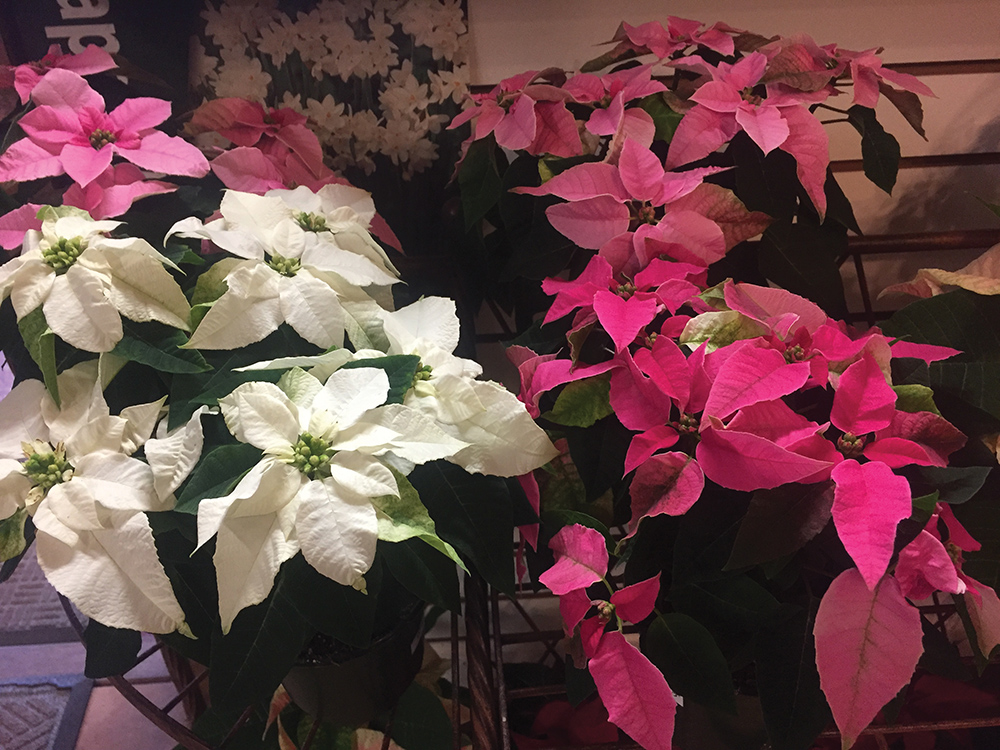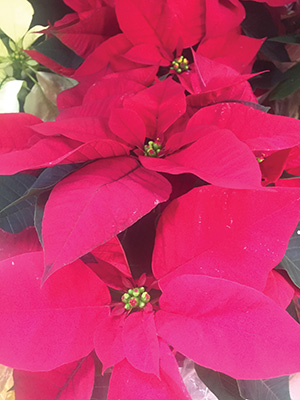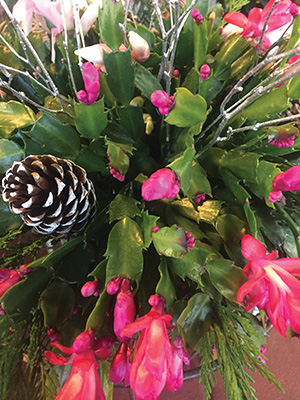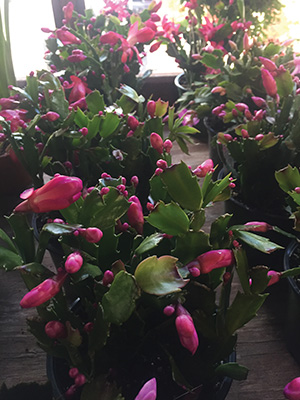By Tammy Thornton

Hope you all had a wonderful Poinsettia Day! Oh wait, you missed it? It’s the one holiday that hasn’t really caught on with Hallmark. December 12th honors the memory of Joel Roberts Poinsett, the first United States Minister (ambassador) to Mexico. In 1825, he sent cuttings of Poinsettias, then known as, Flor de Noche Buena, meaning, Flower of the Holy Night, or Christmas Eve flower, from Mexico to his home in South Carolina. Today, Poinsettias are always associated with Christmastime. Other beautiful Christmas bloomers include cyclamen and, of course, Christmas cactus. Consider it an international Christmas, since all of these flowers originated from other countries.

Though we think of Poinsettias when it’s cold and blustery outside, they actually require warm temperatures. Our snuggly homes normally kept between 65-70 degrees provide the perfect conditions for Poinsettias, but keep them away from cold drafts or excessive heat. They can last year-round but need to be in total darkness at night starting in fall to regain their red color. Be sure to water sparingly as they hate wet, soggy roots. Poinsettias get a bad rap for being poisonous. They aren’t quite as toxic as all the hype, but I keep mine away from pets and young children just in case. Recently, a new little darling has come on the scene. Princettia ® is a relatively new Poinsettia that is a compact cousin of the flower we know. Its dainty leaves (bracts) make it a real charmer.

Christmas cactus (as the name implies) also blooms this time of year; its exotic flowers, though unique, remind me of the flowers of fuschia. Although it’s called a cactus, it isn’t found in the arid desert, but is a native of the coastal mountains of Brazil. This tropical plant needs humid conditions to thrive, and benefits from a frequent misting. Like the Poinsettia, it needs to be well-drained and can’t have soggy roots. Some Christmas cacti have been known to live for 20-30 years. The most common question people have about them is, “how do I get my Christmas cactus to rebloom?” Keep in mind, that most plants sold as Christmas cactus are actually Thanksgiving cactus. I won’t bog you down with their Latin names, but they are a different variety, though the growing conditions are the same. Like many of us, after the holidays (and after blooming) Christmas cactus need a rest. To rebloom, they need 12-14 hours of complete darkness each night. Bright indirect light during the day is fine. Move them to a cooler area of your house (ideally 50-65 degrees) and water them less frequently. Instead of misting them, allow the top of the soil to dry out a bit. They require these conditions for about eight weeks. Gradually, you should see new buds forming at the tips of the segmented hanging stems. Once the cactus starts forming its flower buds, move it back to the sunny spot it enjoyed the previous year. The idea is to give them a period of dormancy before blooming at Christmastime. I think I would certainly bloom better at Christmas if I had some downtime first!

Another beautiful holiday bloomer is cyclamen. It echoes some of the same colors of Christmas cactus and Poinsettias, coming in shades of red, pink, purple, and white. Cyclamen prefer temperatures on the cooler side. Choose the coolest room in your house. If kept in a location that’s too warm, it may go into dormancy. It’s wonderful that, even in the chill of winter, we can enjoy such beautiful blooms in our homes. Cyclamen have attractive rounded or heart-shaped leaves, often with white or silver variegation. Its blooms can last up to three months–definitely worth the money, even if you treat it as an annual. Like the Poinsettias and Christmas cacti, cyclamen must avoid drafts or extreme heat, and will die from overwatering. Allow the soil to dry out to the touch. Water well about once a week, and make sure it has good drainage. Water from below the flowers and leaves, as the plant will rot if the crown, or center of the plant, remains too wet. After its lengthy bloom time, and as warmer temperatures approach, cyclamen will go into dormancy, almost looking dead. Place them in a cool, dark spot and they should revive as the holidays approach next year.
All of these flowers make a statement and really brighten up your home during the holidays. Give your store-bought plants a designer touch by adding painted branches, frosted pine cones, and Christmas balls between the flowers. They make wonderful gifts, especially as hostess gifts or for the hard-to-buy-for friend. You don’t need a green thumb to keep these beauties going. Simply follow the suggestions above, or consider them annuals, and just enjoy them for the holidays. Like some friends that pass in and out of our lives, we enjoy their friendship for a season. Most of all, enjoy the holidays and don’t stress about the little things. And from my house to yours, Merry Christmas!
Tammy Thornton is a mom of four, a substitute teacher, and a Sunday school teacher. She is passionate about gardening and cooking, and loves the beach.





